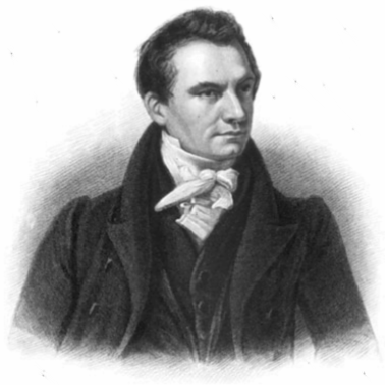|
Brian Reid (computer Scientist)
Brian Keith Reid (born 1949) is an American computer scientist. He developed an early use of a markup language in his 1980 doctoral dissertation. His other principal interest has been computer networking and the development of the Internet. Education Reid received his B.S. in physics from the University of Maryland, College Park in 1970, and then worked in industry for five years before entering graduate school at Carnegie Mellon University, where he was awarded a PhD in computer science in 1980. His dissertation research developed the Scribe word processing system, for which he received the Association for Computing Machinery's Grace Murray Hopper Award in 1982. Reid presented a paper describing Scribe in the same conference session in 1981 in which Charles Goldfarb presented Generalized Markup Language (GML), the immediate predecessor of SGML. [...More Info...] [...Related Items...] OR: [Wikipedia] [Google] [Baidu] |
Scribe (markup Language)
Scribe is a markup language and word processing system that pioneered the use of descriptive markup. Scribe was revolutionary when it was proposed, because it involved for the first time a clean separation of presentation and content. History Beginnings Scribe was designed and developed by Brian Reid of Carnegie Mellon University. It formed the subject ohis 1980 doctoral dissertation for which he received the Association for Computing Machinery's Grace Murray Hopper Award in 1982. Reid presented a paper describing Scribe in the same conference session in 1981 in which Charles Goldfarb presented GML (developed in 1969), the immediate predecessor of SGML. Scribe sold to Unilogic In 1979, at the end of his graduate-student career, Reid sold Scribe to a Pittsburgh-area software company called Unilogic (later renamed Scribe Systems), founded by Michael Shamos, another Carnegie Mellon computer scientist, to market the program. Reid said he simply was looking for a way to unload the ... [...More Info...] [...Related Items...] OR: [Wikipedia] [Google] [Baidu] |
Computer Science
Computer science is the study of computation, automation, and information. Computer science spans theoretical disciplines (such as algorithms, theory of computation, information theory, and automation) to practical disciplines (including the design and implementation of hardware and software). Computer science is generally considered an area of academic research and distinct from computer programming. Algorithms and data structures are central to computer science. The theory of computation concerns abstract models of computation and general classes of problems that can be solved using them. The fields of cryptography and computer security involve studying the means for secure communication and for preventing security vulnerabilities. Computer graphics and computational geometry address the generation of images. Programming language theory considers different ways to describe computational processes, and database theory concerns the management of repositories ... [...More Info...] [...Related Items...] OR: [Wikipedia] [Google] [Baidu] |
Palo Alto, California
Palo Alto (; Spanish for "tall stick") is a charter city in the northwestern corner of Santa Clara County, California, United States, in the San Francisco Bay Area, named after a coastal redwood tree known as El Palo Alto. The city was established in 1894 by the American industrialist Leland Stanford when he founded Stanford University in memory of his son, Leland Stanford Jr. Palo Alto includes portions of Stanford University and borders East Palo Alto, Mountain View, Los Altos, Los Altos Hills, Stanford, Portola Valley, and Menlo Park. At the 2020 census, the population was 68,572. Palo Alto is one of the most expensive cities in the United States in which to live, and its residents are among the most educated in the country. However, it also has a youth suicide rate four times higher than the national average, often attributed to academic pressure. As one of the principal cities of Silicon Valley, Palo Alto is headquarters to a number of high-tech companies, in ... [...More Info...] [...Related Items...] OR: [Wikipedia] [Google] [Baidu] |
Stanford University Network
The Stanford University Network, also known as SUN, SUNet or SU-Net is the campus computer network for Stanford University. History Stanford Research Institute, formerly part of Stanford but on a separate campus, was the site of one of the four original ARPANET nodes. Later ARPANET nodes were located in the Stanford Artificial Intelligence Laboratory, the Computer Science Department, and the Stanford University Medical Center. In late 1979, the Xerox Palo Alto Research Center donated equipment including Xerox Alto computers, a laser printer, and file server connected by Ethernet local area network technology. CSL Technical Report 229 (First author name is misspelled on cover) A router based on the PDP-11 computer from Digital Equipment Corporation with software from MIT was used to connect the Ethernet to the ARPANET. The PARC Universal Packet protocol was initially used on the local parts of the network, which was the experimental version of Ethernet with a data rate under 3 ... [...More Info...] [...Related Items...] OR: [Wikipedia] [Google] [Baidu] |
SUN Workstation
The SUN workstation was a modular computer system designed at Stanford University in the early 1980s. It became the seed technology for many commercial products, including the original workstations from Sun Microsystems. History In 1979 Xerox donated some Alto computers, developed at their Palo Alto Research Center, to Stanford's Computer Science Department, as well as other universities that were developing the early Internet. The Altos were connected using Ethernet to form several local area networks. The SUN's design was inspired by that of the Alto, but used lower-cost modular components. (Many words are spelled phonetically) The project name was derived from the initials of the campus' Stanford University Network. CSL Technical Report 229 (First author name is misspelled on cover) Professor Forest Baskett suggested the best-known configuration: a relatively low-cost personal workstation for computer-aided logic design work. The design created a 3M computer: a 1 million i ... [...More Info...] [...Related Items...] OR: [Wikipedia] [Google] [Baidu] |
James H James is a c |


